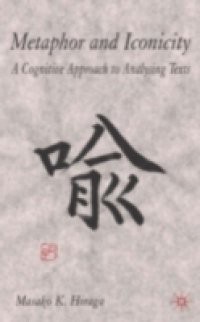Metaphor and Iconicity explores why a certain text has a specific form, whether oral, structural, or visual, to convey certain meanings. The interplay of metaphor and iconicity is analysed in detail, ranging from sound symbolism and parallelism in poetic discourse to word order, inflectional forms, semantic change, writing systems and electronic communication in ordinary discourse in English and Japanese. The study ultimately argues against the dominant form of language as portrayed by Saussure, that sees the linguistic sign as primarily non-iconic, or arbitrary. On both methodological and theoretical levels, Metaphor and Iconicity makes a unique contribution to the study of the relationship between form and meaning in language in general, and in poetic language in particular.

